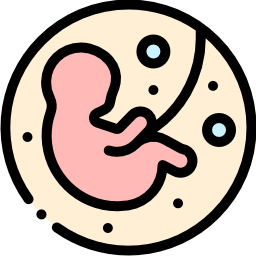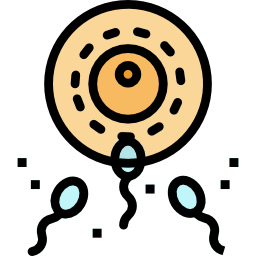What is In Vitro Fertilization (IVF) Therapy?
What is In Vitro Fertilization (IVF) Therapy
It is the most preferred treatment option achieving high success rates in current technological advances. Unlike the ovulation induction method, this method aims to grow 7-15 egg cells. On the 3rd day of menstruation, an ultrasound examination of the female reproductive system is performed and the findings are matched by the age, egg cell count, and hormonal status of the woman to select the appropriate doses of hormone medications in compliance with the scheduled personalized treatment.
Similar to the artificial insemination method, the egg cell growth is monitored with ultrasound imaging at regular intervals while the eggs are growing under the effect of the hormone treatment. When the egg cells reach the appropriate size, an injection is made to help the egg cells get mature. After 35 hours and before the mature egg cells crack, these mature eggs are collected with the aspiration method (Oocyte pick up -OPU- method). Collection of the eggs is performed under anesthesia and it is a painless process. The collected eggs are fertilized with the ICSI method on the same day using either fresh sperms collected from the man or using the thawed sperms frozen previously. To perform the ICSI procedure, the embryologist will select the healthiest sperm under the microscope. Then, the embryologist will slow down the motility of that sperm by using special methods. After slowing down the sperm, the head part is separated and injected into the ovum with the use of specific devices. After the ICSI procedure, the eggs are placed in special nutrient solutions and stored in a special heater called incubator, which mimics the temperature and pressure in the intrauterine cavity.
After one day following the ICSI procedure, the fertilized eggs are examined under the microscope to determine whether fertilization occurred appropriately. On the 3rd day, the fertilized embryos are examined for their quality. Embryo count and quality is critical to perform the embryo transfer on the second,third,and the fifth day. After examining the embryo count and quality, embryo transfer can be performed on these days. The embryos that are not used in the procedure can be frozen with the use of special techniques and stored for later use.
Embryo transfer is a painless procedure that does not require anesthesia. To perform the procedure, embryos are loaded into a special catheter and transferred into the uterus under ultrasound guidance. The medications to be used after the procedure will not be the same medication you used before the transfer. It is critical to take them regularly and appropriately because they will help the implantation of the transferred embryo.
Other Topics

General Information
After thoroughly investigating all potential causes of infertility in the couple, the underlying causes are identified and treatment options are reviewed.
Read More
How is Artificial Insemination (IUI) Performed
It is a treatment option for specific conditions. The cost of this treatment option is low. Although the success rates of intrauterine insemination (IUI) are not.
Read More
What is In Vitro Fertilization (IVF) Therapy?
It is the most preferred treatment option achieving high success rates in current technological advances. Unlike the ovulation induction method, this method aims to grow 7-15 egg cells.
Read More
Egg Freezing (Oocyte cryopreservation):
Unfortunately, the reproductive potential of women declines by advancing age. Because both the quality and quantity of a woman's eggs, diminishes with age while the uterus maintain its ability to carry a pregnancy.
Read More
Tese/Micro TESE & Sperm Freezing
TESE is an invasive procedure utilized to locate sperm in men with azoospermia (no sperm in semen) or severe testicular failure. Micro TESE is a small surgical operation performed with a microscope and samples are taken from the appropriate parts accordin
Read More
Embryo Freezing (cryopreservation)
Embryo freezing is a method of preserving the viability of embryos by carefully cooling them to very low temperatures (-196 0 C ).
Read More
